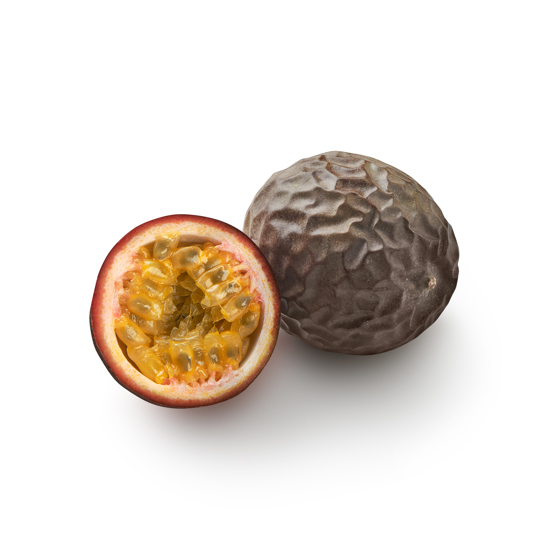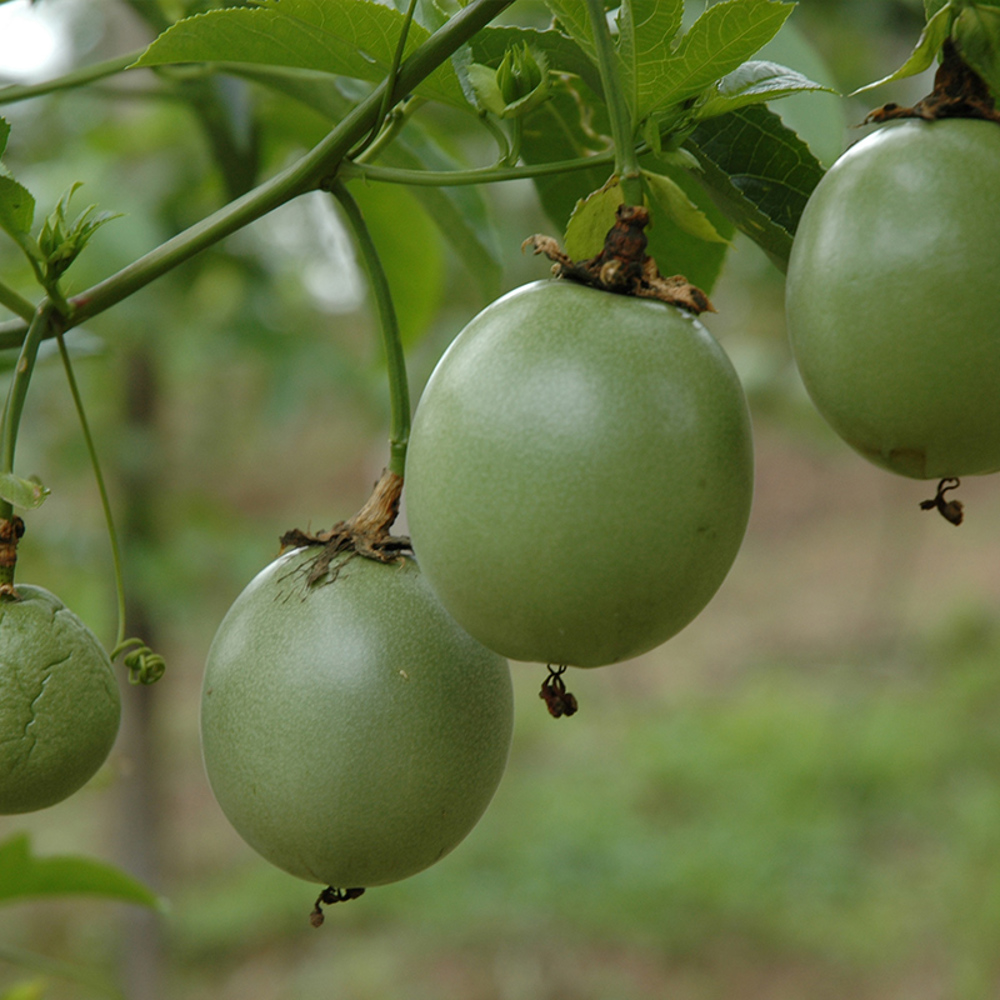Storage advice
EAT ME passion fruits don't mind being stored a bit longer. Even if the skin wrinkles, the fruits are still delicious to eat!
If you have a passion for flavour

The passion fruit is rapidly shedding its image as an exotic fruit. They are increasingly becoming part of the normal offering in European shops. But they still retain their exotic roots. In countries such as Brazil, Zimbabwe, Thailand and Vietnam, they grow on creeping vines of the family that lends its name to the fruit: passieflora.
The soft yellow flesh is packed with edible seeds. These seeds have a tangy flavour. When the dark purple skin becomes wrinkly, the flesh becomes even sweeter. The leathery skin itself is inedible.
Passion fruits add delicious flavour dimensions to sweet dishes. Use them in an exotic cheesecake or an exclusive crème brulée. Liven up a dressing with the addition of passion fruit. Or simply spoon out the flesh as a rewarding snack.
Simply slice the fruit in half and scoop out the flesh with a spoon. Did you know that the passion fruits are also suitable for cooking and blending?


EAT ME passion fruits don't mind being stored a bit longer. Even if the skin wrinkles, the fruits are still delicious to eat!
If you are a fan of passion fruit: it is also a fruit that is good for you. One of the ingredients in passion fruit is vitamin C. A vitamin with many good properties, because C is important for your gums. You get strong teeth.
EAT ME passion fruits come from different regions of the world, from South America and South-East Asia to Israel. During the first 12 months, the crop grows from a seed to a plant. It starts to bear the first fruits at this stage. A remarkable detail is that the passion fruit plant produces fruits year-round. From the stage when a flower appears on the plant, it takes around 12 weeks for a passion fruit to develop. This is when the fruits take on their deep purple colour.
